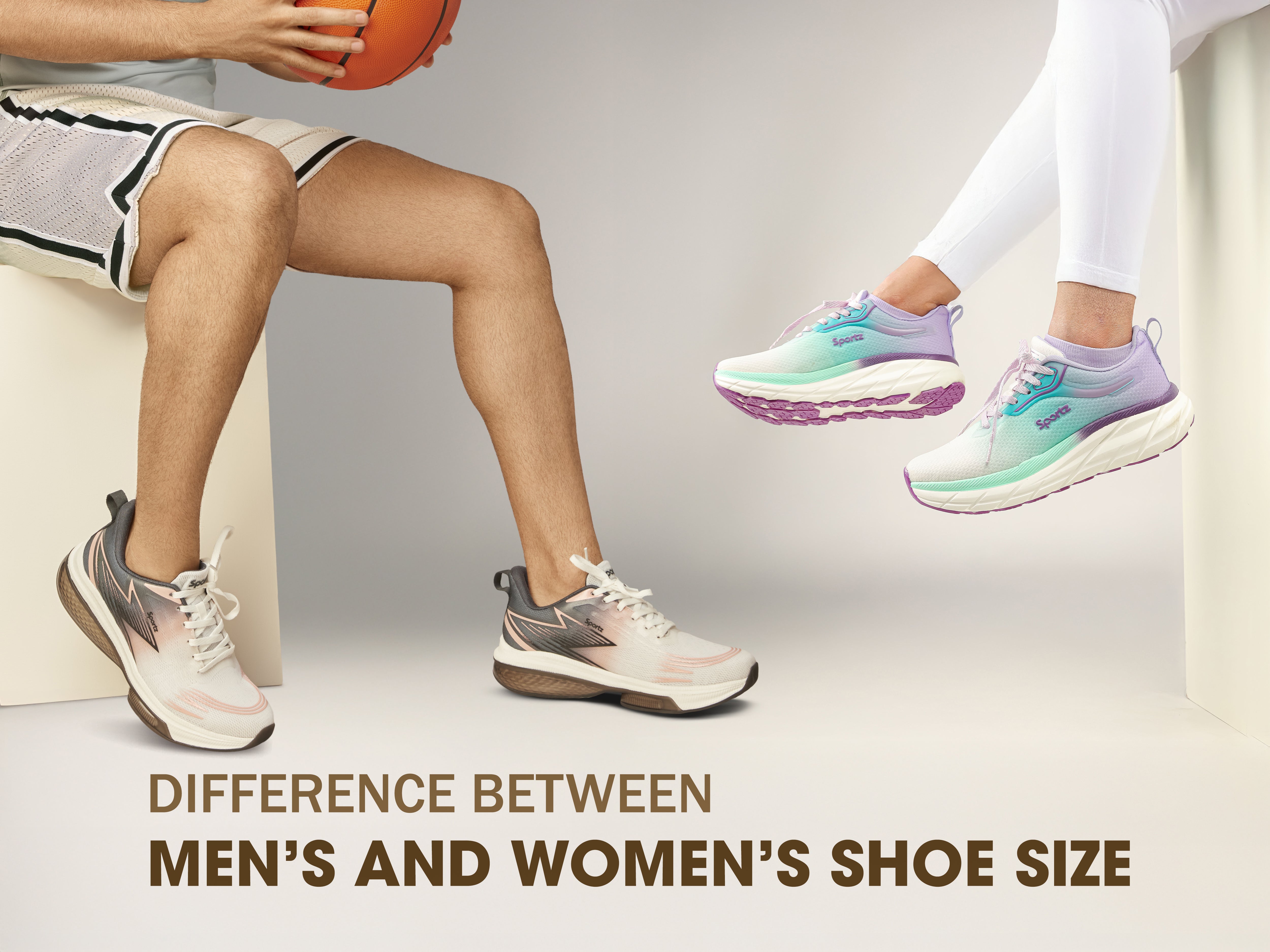Size does matters when you try to find the perfect pair of shoes. But were you aware that there is a difference between men's and women's shoes size? Most people do need some helpful guidance when buying shoes. This blog article will explain to you what are the major aspects about men's size vs women's (i.e., difference between men's shoe size and women's).
Shoes are designed differently for men and women. They are like that because male and female feet aren't the same size. Also, they aren't shaped the same way. So, whether you're shopping for men's shoes or women's shoes, knowing the difference can help you find an even better fit.
What Is the Fundamental Unit of Shoe Sizes?
The difference between men's and women's shoes size is not only in the number. For instance, a men's size 7 is not the same as a women's size 7. Often there is also difference of 1.5 size between the two. If a man is wearing size 8, then, the women's correct size would be 9.5.
This variation of men and women's shoe sizing (i.e., difference between men's and women's shoes size) only exists because men's shoes are wider and longer. On the other hand, women's shoes are built for narrower feet and shorter heels.
The Main Variation Between Men's and Women's Shoes
1. Size Numbers Are Different
One of the most popular is the size number. The difference between men's shoe size and women's size is roughly 1.5. For example, a men's size 9 will be roughly a women's size 10.5. This rule also comes in handy converting shoe sizes during shopping.
2. Width of the Shoes
Men's shoes are usually wider. Women have a more tapered foot. Their heel is narrower and more tapered than the men. Furthermore, their forefoot is wider than the man. Therefore, the difference between male and female shoes also includes shoe width. And even if the size number is the same, the fit may be different because of the shape.
3. Shoe Shape and Structure
The discrepancy within men's vs women's shoe size (i.e., difference between men's and women's shoes size) also considers style and design. Men's shoes are made to support more weight and pressure. The footwear of women is generally lighter and more flexible. This impacts how they walk and run.
Why Shoe Size Difference Matters
There are many reasons why understanding the difference between men's and women's shoe size can be necessary. Wearing the wrong size could end up feeling painful pressure and cause injury. Also, getting blisters and even permanently damaging your feet. People who use or share shoes are likely to feel uncomfortable or discomfort due to the difference between male and female shoe size.
Plus, athletes and runners are always searching for that perfect fit. They need to learn both people's sizes and the difference between men's shoe size and women's. This might prevent injury and ensure an appropriate fit.
How to Select the Appropriate Shoe Size?
1. Measure Your Feet
Always measure both feet if it is some shoes that you are purchasing. Feet can change throughout the years in size due to age and weight gain or loss.
2. Try Shoes in the Evening
Your feet swell throughout the day. You should always try a new pair of shoes in the evening.
3. Check the Width
Keep in mind that men's shoes are wider than women's shoes. And even if the length does, the width may not. Definitely try them on (or check out the size chart) first.
4. Use Size Conversion Charts
If you are transitioning between men's and women's styles, a size conversion chart can be helpful. This will guide you to your perfect match.
5. Are Unisex Shoes the Same?
Some brands sell unisex shoes. But even unisex shoes come in either men's or women's sizing. In those cases, it's probably best to consult the label to find out the difference between male and female shoes.
Why Shoe Design Matters
The difference between men's and women's shoes size isn't just a number. Shoe design is also a big factor. Women's shoes tend to be curvier. Men's shoes are constructed to have strong soles. The material, heel height and arch support can differ too.
For instance, men's shoes might be more cushioned or have sturdier soles. There may also be women's shoes that uses softer materials with slimmer heels. These modifications fit the size and weight of a man or woman's foot.
Can Women Wear Men's Shoes?
Yes, a lot of women buy men's shoes, particularly if they have wider feet. But they need to convert that into the right size. Ditto for men and their desire to wear women's shoes. What is more important is comfort than the label.
Conclusion
The difference between men's and women's shoes size is perfectly clear once you learn the fundamental points. It has to do with size, width, shape, and even design. It is always frustrating as ordering something that you need to be a specific fit and then receiving something that is not. If you're shopping in a local store, you should try everything on. Always. If you're shopping online, you should also treat this as a try-on experience and follow the size charts of brands. Furthermore, you can visit the stores you trust. Whether you are shopping for men's shoes or women's shoes, just choose the right size. If you choose the right size, you won't be disappointed with what you get.
FAQs
1. Is a men's size 7 shoe the same as a women's?
No. A men's size 7 is typically equivalent to a women's size 8.5.
2. What size is 9 in men's to women's?
Women's size 9 is equivalent to men's size 7.5.
3. Can a woman wear a men's size shoe?
Why not? But make sure that you must adjust the size and check the width.
4. Are men's shoes wider than women's?
Yes, men's shoes tend to be wider and bigger in shape.
5. Why do men's and women's shoes look different?
Well, men's and women's feet are shaped differently. They have different size and pressure points.
6. Are unisex shoes the same size for men and women?
No, unisex shoes follow either men's or women's sizing, not both.


Share:
Key Difference Between Hiking Shoes and Running Shoes
How to Check Original Walkaroo Shoes – Step-by-Step Guide to Avoid Fakes